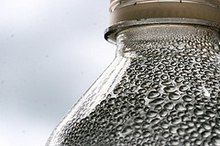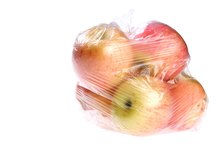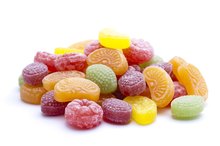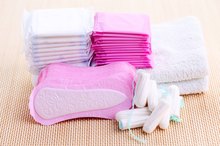What does fact checked mean?
At Healthfully, we strive to deliver objective content that is accurate and up-to-date. Our team periodically reviews articles in order to ensure content quality. The sources cited below consist of evidence from peer-reviewed journals, prominent medical organizations, academic associations, and government data.
The information contained on this site is for informational purposes only, and should not be used as a substitute for the advice of a professional health care provider. Please check with the appropriate physician regarding health questions and concerns. Although we strive to deliver accurate and up-to-date information, no guarantee to that effect is made.
Health Concerns for Silicone Ice Trays Vs. Plastic Ice Trays
Plastic ice cube trays have been a popular choice for many years; they are cheap, reusable and convenient. Recent concerns about chemicals in plastics that can leach into foods have raised questions about the impact on health from using plastic ice cube trays. Silicone ice cube trays are an alternative to plastic 1. They became available in recent years.
What are Plastic and Silicone?
Plastic and silicone are two materials often considered to be similar, but in fact have some very important differences. Plastic is a synthetic made of a number of different polymers; as a result; several different types of plastics are on the market. All plastic items are marked with a number on the bottom that indicates the type of plastic. Silicone, although it resembles a plastic and is also synthetic, is quite different. Silicone is a pliable, sterile resin that to date has shown no signs of leaching anything into foods or liquids.
- Plastic and silicone are two materials often considered to be similar, but in fact have some very important differences.
- Plastic is a synthetic made of a number of different polymers; as a result; several different types of plastics are on the market.
Plastic Ice Trays
What Are the Dangers of Plastic Food Storage Containers?
Learn More
Manufacturers make plastic ice trays of a hard plastic, and some of these plastics do contain BPA, the chemical shown to carry a health risk. Since the information about BPA became public, many plastics companies have released new versions of their plastic ice cube trays that are BPA free. If your ice cube trays are more than a few years old, odds are good they contain BPA. The change to BPA free plastics does not necessarily mean they are safe and won't leach chemicals, only that they will not leach BPA.
- Manufacturers make plastic ice trays of a hard plastic, and some of these plastics do contain BPA, the chemical shown to carry a health risk.
- The change to BPA free plastics does not necessarily mean they are safe and won't leach chemicals, only that they will not leach BPA.
Dangers of BPA in Ice Trays
BPA has been shown to cause health concerns in unborn babies, children and even adults. Some of the problems associated with BPA include damage to the brain, behavioral changes and damage to the pituitary gland. Other concerns are considered to be a lower risk. The risk of BPA leaching into foods or liquids is highest when the plastic is heated. The odds of it leaching into ice is therefore relatively low. Many people use ice cube trays for other purposes ,however, that may lead to a higher risk. Putting hot baby food or other hot liquids or purees into ice cube trays could heat the plastic enough to cause some leaching.
- BPA has been shown to cause health concerns in unborn babies, children and even adults.
- The risk of BPA leaching into foods or liquids is highest when the plastic is heated.
Silicone Ice Trays
Dangers of Freezing Plastic Water Bottles
Learn More
Some studies consider silicone to be a safer alternative to plastic because there is no risk of chemical leaching. Silicone is sterile and does not break down as easily as plastic, making it more durable. Currently, there is no known health danger of using silicone ice trays, but since its use fairly recently, we may not know some things about silicone.
Related Articles
References









